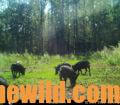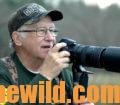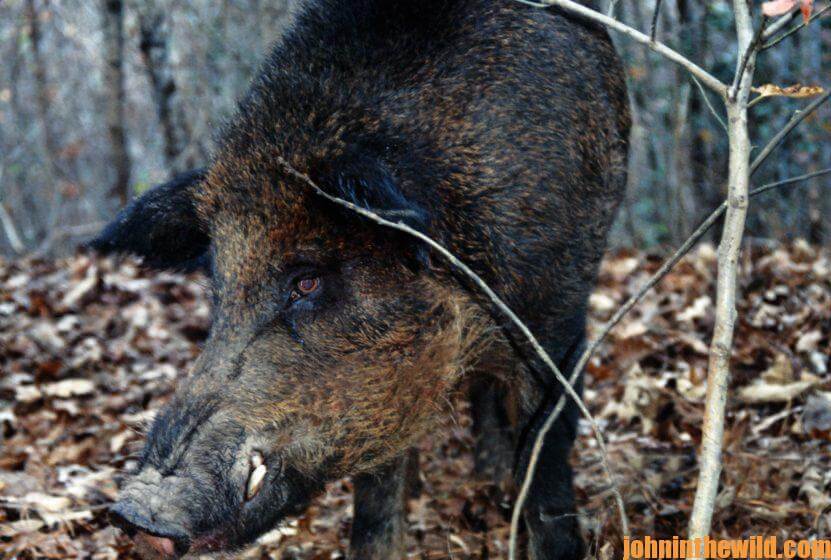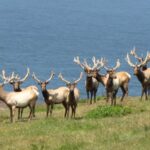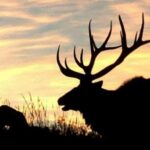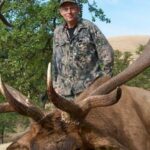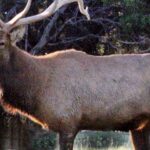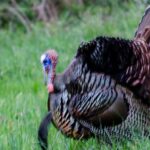Editor’s Note: For the most part, feral hogs are destructive. They’ll tear-up culverts, roads and green fields and root-up wildlife plantings and agriculture. Many people enjoy eating wild pigs. In the South, you generally can fill-up your freezer with all the wild pork you want to eat. In most areas with wild hogs, the hogs reproduce faster than hunters can take them, eat them and/or give away the meat. Female feral pigs can reach sexual maturity at 3-4 months of age and have two litters per year of up to 12 piglets each. Male feral hogs are sexually mature at 4-5 months. Slade Johnston of Tuscaloosa, Alabama, has found a way to enjoy more free hunting and fishing trips by using hunting hogs as a trade item. People who have game that Johnston wants to hunt can trade him a hunting trip to their areas to hunt the game he’s interested in, and in exchange, he hosts them on an Alabama wild-hog hunting trip. Whether you want to take meat hogs to eat or a trophy boar with long teeth to mount, Johnston may have a trip to offer you. Johnston has access to private hunting lands that have been passed down through his family in the game-rich section of the state known as the Black Belt. Due to the rich soil there, this family-owned land produces a good number of turkeys and deer and outstanding numbers of feral hogs. To learn more, visit https://trips4trade.com/ and the Facebook page https://www.facebook.com/trips4trade/.
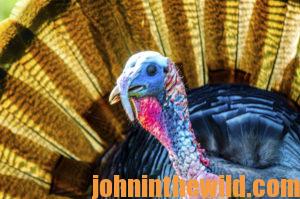 We work with Moultrie Products (https://www.moultriefeeders.com/products)
We work with Moultrie Products (https://www.moultriefeeders.com/products)
(https://www.facebook.com/MoultrieProducts/) out of Birmingham, Alabama, to supply our feeders and trail cameras. When we know we have a trip trader coming to hunt with us, we can check the trail cameras before the hunter arrives and have a good idea of when the hogs are coming in, and where they are on our property. We’ve learned that if you put out bait for hogs, within a day those hogs will find that corn and start feeding on it. Although the hogs will come and go at various times of the day and night, as long as that corn is on the ground, they’ll find it and eat it. When we know we have a wild-hog hunter arriving, we may put corn out in several spots with trail cameras on them one or two days before our hunter arrives. When we check our trail cameras before the hunt, then we know how to get the hunter to the spot where the most hogs are coming in, either in daylight hours or at night.
 About two or three years ago, some of our friends bought thermal riflescopes and thermal monoculars. We hunted a few times with them and asked if we could borrow their thermal equipment to take hunters out at night and harvest hogs. We went ahead and bought one thermal scope and thermal monocular for ourselves. If we have more than one hunter – say a party of two or three – arriving, we can borrow additional thermal-sighted guns. Then everyone can hunt hogs at night.
About two or three years ago, some of our friends bought thermal riflescopes and thermal monoculars. We hunted a few times with them and asked if we could borrow their thermal equipment to take hunters out at night and harvest hogs. We went ahead and bought one thermal scope and thermal monocular for ourselves. If we have more than one hunter – say a party of two or three – arriving, we can borrow additional thermal-sighted guns. Then everyone can hunt hogs at night.
Hunting hogs at night with thermal equipment is some of the most fun hunting I’ve ever done and is one of the most- effective ways, other than trapping, to get rid of hogs on your property. We use a .223 or a .308 rifle with a Pulsar thermal imaging riflescope (https://www.pulsar-nv.com/glo/). We have some of the rifles we can borrow that have registered suppressors (silencers) on them. One of the most-effective set-ups we’ve seen and used is the 300-Blackout AR-15 rifle shooting supersonic bullets with a silencer attached to the end of the barrel. If the hogs can’t determine where the shots are coming from, they don’t know when or where to run.
The biggest wild hog we’ve taken off our land weighed between 270 – 300 pounds, and that hog was taken in the afternoon. Our average big hog taken will weigh 200-pounds plus. We’ve noticed each year that we’re seeing bigger and bigger hogs. I believe we will start seeing more 300-pound hogs in the next few years. When we have a Trips4Trade hunter in, all he has to do is show-up. We’ll provide the guns, ammunition and thermal-sighting equipment he needs to hunt and harvest hogs at night at certain times of the year.
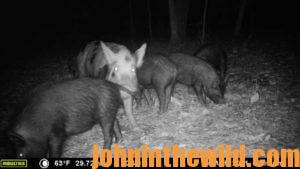 We have such an abundance of feral pigs that we trap on our land too as well as hunting hogs year-round. We started out using stationary traps and only caught a few hogs in them. That form of trapping wasn’t very successful. This year, 2021, we applied for the Alabama Feral Swine Control Program, a cost-share program with Sumter County. We’ve been approved to purchase one of the most-sophisticated and successful traps on the market today. This program enables a landowner to only pay 25% of the cost of any approved trap. With these traps, you can wait until you get the entire sounder (a family group of hogs) in the trap, see how-many pigs are in your trap on your cell phone and then push a button on your cell phone to cause the trap door to fall. We hope to catch 10 to 15 hogs each time we set the trap. This type of trap is portable, so we can move it to various parts of our farm and catch different sounders that we’ve identified. But these traps are expensive, and even with this program paying 75% of the trap, the 25% we have to pay is still a good bit of money. The least-expensive traps we’ve seen cost around $7,000, and the better traps in the program can cost as much as $15,000-$20,000 each. We’re planning to start out with one trap, learn how to use it and see how many hogs we can catch with this new form of trapping.
We have such an abundance of feral pigs that we trap on our land too as well as hunting hogs year-round. We started out using stationary traps and only caught a few hogs in them. That form of trapping wasn’t very successful. This year, 2021, we applied for the Alabama Feral Swine Control Program, a cost-share program with Sumter County. We’ve been approved to purchase one of the most-sophisticated and successful traps on the market today. This program enables a landowner to only pay 25% of the cost of any approved trap. With these traps, you can wait until you get the entire sounder (a family group of hogs) in the trap, see how-many pigs are in your trap on your cell phone and then push a button on your cell phone to cause the trap door to fall. We hope to catch 10 to 15 hogs each time we set the trap. This type of trap is portable, so we can move it to various parts of our farm and catch different sounders that we’ve identified. But these traps are expensive, and even with this program paying 75% of the trap, the 25% we have to pay is still a good bit of money. The least-expensive traps we’ve seen cost around $7,000, and the better traps in the program can cost as much as $15,000-$20,000 each. We’re planning to start out with one trap, learn how to use it and see how many hogs we can catch with this new form of trapping.
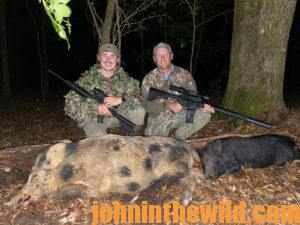 Several organizations are involved in this cost-sharing, pig-trapping program, including the Alabama Soil and Water Conservation Committee, the USDA and the University of West Alabama in Livingston. I think if you want to build the trap yourself, then you possibly can buy the sophisticated materials for the door. Your cost may be half as much as it will cost if you purchase the entire trap from the company. We haven’t really decided which one we’re going to order just yet; we’re still comparing features. We’ve just been approved to participate in this program, so there is more we need to learn before we purchase the trap. The State of Alabama has realized how serious the hog problem is in the state and is working with more agencies to help landowners come up with better methods of getting rid of more hogs quicker.
Several organizations are involved in this cost-sharing, pig-trapping program, including the Alabama Soil and Water Conservation Committee, the USDA and the University of West Alabama in Livingston. I think if you want to build the trap yourself, then you possibly can buy the sophisticated materials for the door. Your cost may be half as much as it will cost if you purchase the entire trap from the company. We haven’t really decided which one we’re going to order just yet; we’re still comparing features. We’ve just been approved to participate in this program, so there is more we need to learn before we purchase the trap. The State of Alabama has realized how serious the hog problem is in the state and is working with more agencies to help landowners come up with better methods of getting rid of more hogs quicker.
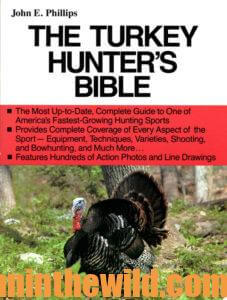 Feral pigs destroy turkey nests, so ridding a property of them enables the population of turkeys to flourish. To learn more about turkey hunting, check out John E. Phillips’s book “The Turkey Hunter’s Bible,” available in print, Kindle and Audible versions at https://www.amazon.com/gp/product/B007HT1IUS/ref=dbs_a_def_rwt_hsch_vapi_taft_p1_i7. You may have to cut and paste this link into your browser. (When you click on this book, notice on the left where Amazon says you can read 10% of this book for free and hear 10% for free). To learn more about other turkey books by John E. Phillips, go to www.amazon.com/author/johnephillips.
Feral pigs destroy turkey nests, so ridding a property of them enables the population of turkeys to flourish. To learn more about turkey hunting, check out John E. Phillips’s book “The Turkey Hunter’s Bible,” available in print, Kindle and Audible versions at https://www.amazon.com/gp/product/B007HT1IUS/ref=dbs_a_def_rwt_hsch_vapi_taft_p1_i7. You may have to cut and paste this link into your browser. (When you click on this book, notice on the left where Amazon says you can read 10% of this book for free and hear 10% for free). To learn more about other turkey books by John E. Phillips, go to www.amazon.com/author/johnephillips.

